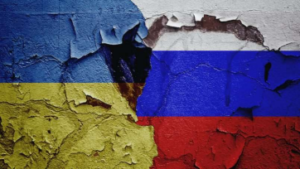
Happy Farmers leads to a Happy Nation

India is a big nation, with so many people depending on the farmers for food, farmers whose nos. are depleting every year, India needs to be secure in her ability to provide everyone with food and this food security depends on the availability of fertilisers.

The union ministry has approved a budget of 1.08 crore subsidy for farmers to get their fertilisers for the upcoming Kharif season at the same price as that of last year.
The Kharif season would lead to half of the annual supply of food in our country. The Kharif season is a June- September season or it is also known as the summer sown season. It is then harvested during September to October. The start of the summer rains marks the beginning of this season.
Minister of Union for Health, Fertilisers and Chemicals, Mansukh Mandaviya said that there will be no increase in prices of fertilisers. He said that the Union Government will not increase prices for this Kharif season, they are providing a subsidy of 70,000 crore rupees for Urea and 38,000 crores in for DAP.

The current rate of fertilisers is Rs 276 per bag of Urea and DAP is Rs 1,350.
This year the total cultivated area for the kharif season is estimated to be around 140 million hectare and the subsidy for each hectare would be around 8909 rupees.

This subsidy is going to benefit about 12 crore farmers, in this season due to less rainfall the farmers rely heavily on fertilisers to keep up the growth of plants and provide for yield enhancement.
Companies buy these fertilisers at the global market rate; they then sell it to farmers at a very discounted price and these discount prices are then met by the government. i.e. the difference between the market price and the discounted price.
India has already been prepared for the season with 75LMT of Urea, 36LMT of DAP and 45LMT of NPK. This comes on the heels of higher domestic output of nano urea, a highly efficient and novel form of the fertiliser.
The farmers will be able to buy the fertilisers at the same price as that of last year and this subsidy is said to only be for the Kharif season. He also stated that the Indian farmers are getting the fertilisers at a very low rate compared to other countries.
The reason for a huge amount of subsidy being authorised is because the international rates of these fertilisers have come down slightly, this subsidy will also remain for the entirety of the Kharif season.

The Ukraine conflict last year had raised the subsidy rates up to 2.56 lakh crore a multiyear high, India depends on global imports of important fertilisers to meet the food requirements of the entire country.
India has already been in agreement with 13 countries for at least 70% of its fertiliser requirement, the half of annual requirement of DAP and 15% of NPK fertilisers, the entire requirement of the fertiliser MOP is met solely through imports. We also have Indian firms for the first time having finalised in several North African mineral rich nations for the long-term supplies of minerals required.
Kharif season also depends on rains for irrigation of crops, the impending oncoming of the El Nino a monsoon disrupting Global weather pattern is a key risk this year. Rahul Chouhan of IGrain Pvt. Ltd. Said that if the rains are scanty then the demand for fertilisers could go up.
El Nino is the complex whether pattern occurring because of fluctuations of ocean temperature in the eastern central equatorial pacific region. This happens in episodes every 2 to 7 years, and it is not consistent. They disrupt patterns of the ecosystem and can cause wildfires and weather fluctuations.







